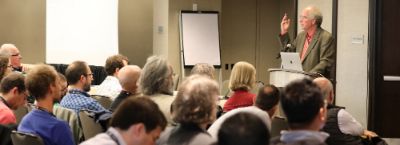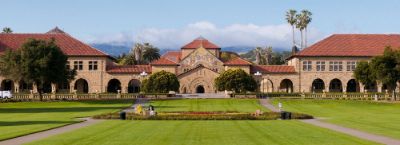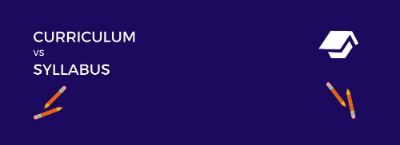As one of the first two Fulbright Foreign Student Program grantees from Armenia, I have received numerous emails and messages throughout these years from people who are considering applying to the same scholarship program. It is that time of year again when applications are open. Over the years, I have noticed a pattern in the questions potential applicants ask. Thus, I decided to share some tips which, I think, would answer many of the applicants’ questions. Note that the opinions presented below are based on my personal experience and may not necessarily reflect those of the Fulbright Program.
A little bit about the Fulbright Program
As stated on the Program’s official website:
“The Fulbright Program is the flagship international educational exchange program sponsored by the U.S. government and is designed to increase mutual understanding between the people of the United States and the people of other countries. The Fulbright Program awards approximately 8,000 grants annually. Currently, the Fulbright Program operates in over 160 countries worldwide.”
This post is about two programs operating under the Fulbright Program offered to Armenians:
- Fulbright Foreign Student Program, which offers scholarships for pursuing a Master’s degree in the U.S. during the 2019-2020 academic year.
- Fulbright-Hovnanian grant competition, which offers scholarships for pursuing a Master’s Degree in science, technology, engineering, and mathematics (STEM fields) and/or entrepreneurship in the U.S. during the 2019-2020 academic year.
A little bit about me
In 2013, for the first time in Armenia, the Fulbright Foreign Student Program opened its application call for the 2014-2015 academic year. That year, only two scholarships were available for Armenia, and I became one of the first two grantees from Armenia. The Program gave me an opportunity to pursue a fully-sponsored Master’s degree at the University of Missouri, USA. I completed my degree in 2016, and in 2017 was invited to serve on the Fulbright national selection committee.
Fortunately, since then the number of scholarships allocated to Armenia has increased and a new program—Fulbright-Hovnanian grant competition was also established, further increasing the number of available scholarships. Both programs are highly competitive and so, here are some tips for completing your application form and preparing for an interview.
How to succeed with your Fulbright application?
1. Start Early
This is probably obvious advice but many people love procrastinating—filling out the application form half an hour before the deadline. There are two main reasons why I highly recommend starting your application early.
- It’s a lengthy form with many questions and requirements. For some parts of the application package, you, as an applicant, will need others’ help and will highly depend on their availability. For example, recommendation letters are an important part. The applicant enters the name and contact information of the person who will provide the reference. The system then generates an email and sends the form to the email address provided. After the letter is prepared and sent, the letter appears in the application and becomes visible for the committee (the applicant does not have access to the text, he/she gets a notification that the letter was submitted). Keep in mind, that most supervisors are busy and need two or three weeks (or more) to write a quality recommendation letter. When asking for a recommendation letter, make sure you tell them what you are applying for and why you need the letter. Also, ask someone who will provide a good recommendation letter. Having served on different committees, I have seen many “recommendation letters” that actually heart the applicant rather than promote. Another aspect that might be time-consuming is that you will need to collect many documents and have them translated.
- Even if you manage to fill out the application in a day, it is most probably not going to be competitive enough. There will probably be typos, misspelled words, errors, and some weird-looking sentences. It is a good idea to spend enough time on all the sections, put the application aside and not look at it for a few days, and then pick it up and re-read it. Often, it is the case that you personally will not like what you wrote a few days ago and will find many errors (and sentences that do not make sense).
2. Edit Carefully
English may not be your first language but the application form is in English and you are applying for pursuing a Master’s degree in the U.S. You may be a very smart and experienced professional in your field. However, if you are sending a sloppy application it is a good reason for the selection committee to assume that you have not spent enough time on your application and you do not care much about the scholarship. The programs receive hundreds of applications that are carefully evaluated by all the committee members. Submitting a carefully edited and flawless application is an indication of you having a professional attitude and taking the opportunity seriously. Before submitting your application, ask your friends/family/teachers for some feedback on it. Maybe even ask a native English speaker to proofread it.
3. Do Not Skip Any Sections
Some sections/questions in the application are mandatory, others are optional. It goes without saying, that all the required questions need to be answered. Even if the question is optional, it is better to answer it rather than ignore it and leave an impression that you do not care about the application. The answer to some of the optional sections (i.e. past fellowships, honors, and publications) might be on your CV/Resume. If that is the case, I would still recommend filling out those sections, because it makes the evaluation process easier. Incomplete applications will probably quickly end up in the trash.
One of the optional sections is called “University Preferences”. Mentioning university, department and degree names, that offer the exact program you are interested in, along with strong reasons for why you are interested in those particular programs, shows that you “have done your homework”. This illustrates that you know your field, you have done your research and know which universities might help you reach your career goals. More info on how to find graduate programs in the U.S. can be found here. However, simply writing some university names for the sake of filling out space will not help your application. If you are interested in studying beer technology, for example, but you mention a university located in a state that is not known for its beer production, or the university itself does not have such a program, it is going to look bad on your application.
4. Show That You Have a Plan
In your study research objective illustrate that you have at least a rough draft of what you want to research/gain/achieve during your Master's program. While having a detailed plan helps, writing a study research objective using many field-specific terms that others may not be familiar with, does not. Show the committee that you have a research topic in mind, preferably related to Armenia (or insert your country name, if you are applying for the Fulbright program from another country). Also, try to back up your research proposal with references to other studies and reputable sources in your area of interest. Even if the research proposal is not related to Armenia, show that the skills and methodology learned in the US will be applicable to Armenia as well. Your country may not benefit from your studies right after completing the degree. Therefore, in your personal statement mention how you think your studies will benefit the country in the long run. It is also important to address why you want to pursue your Master’s degree in the U.S. and not somewhere else. The “Study Research Objective” and “Personal Statement” sections are good places to do so.
Throughout your application (and interview) demonstrate your leadership and communication skills, as well as flexibility and open-mindedness. By this, I do not mean simply writing “I have good communication, leadership, and XYZ skills”. Back up those claims with clear examples from your work, study, volunteering or any other experience.
Speaking of interviews. After passing the application screening stage, you will be invited to an interview. If you made it this far, here are a few things to remember:
- Go to the interview a little early than invited and be professionally dressed (business-casual is fine too). Do not go in shorts, flip flops, and graphic tees or in a party dress with a ton of make-up and jewelry. This is a professional interview, not a meeting with friends or a party.
- Be confident! Do not act and do not be overly emotional (i.e. crying during the interview). Be very natural and relaxed. If a committee member makes a joke, smile, if they are asking a serious question, answer seriously. If you have made it this far, it means the committee has seen potential in you and they want you to help them see the best of you.
- Given the large number of applicants, interviews are relatively short—about 10-15 minutes. Therefore, if you are asked a question, be concise and specific. Do not beat around the bush. Some people give a long background information before answering the main question. If you are asked about X, do not start talking about Y, then about Z, and only then answer the question which was about X.
- Do not get anxious or aggressive if the committee asks many questions or if you (think) have answered those questions somewhere in you application. There is a reason they are asking those questions—if you have already addressed them, then the committee probably just wants to clarify some aspects of it.
- If you do not understand a question, it is OK to ask the committee member to repeat or paraphrase the question.
Finally, I always get the following question: “What do they ask at the interview?” The committee does not have a list of questions. Questions vary—they can be about your professional career, your goals, some of your answers in the application form, or something else. All the questions are intended to help the applicant show that she/he is one of the best candidates. Each scholarship costs the program tens of thousands of dollars, which is why you, as an applicant, need to prove that you are a top candidate for that investment. That being said, I hope this article answered some of the questions about the application process.
Good Luck!
Published on Mar 15, 2018









